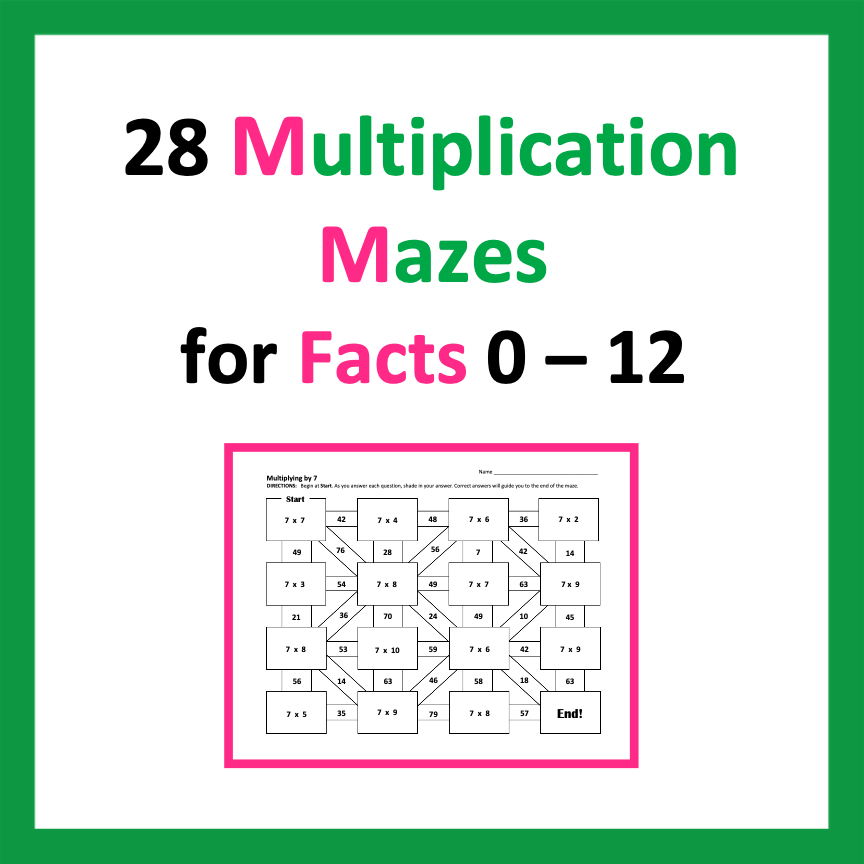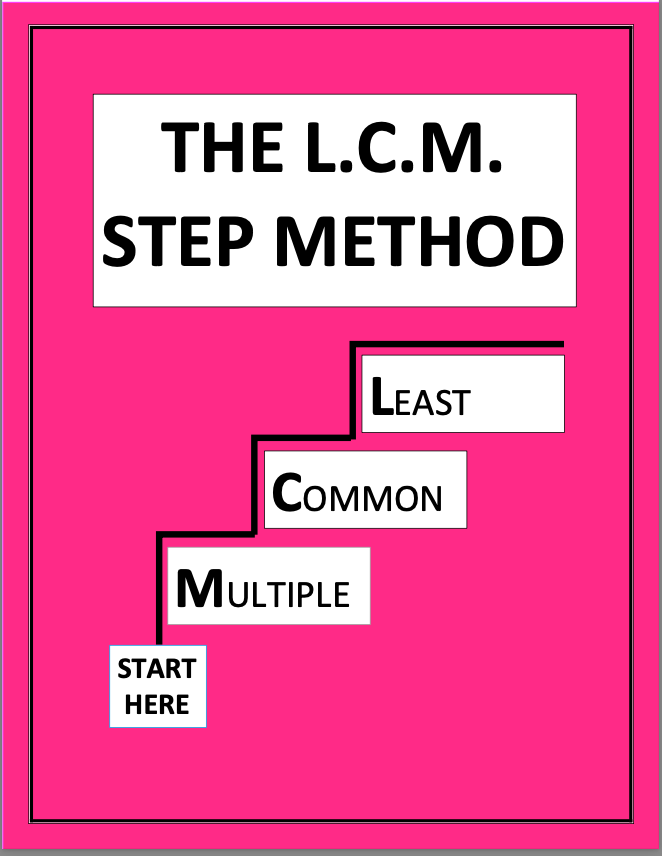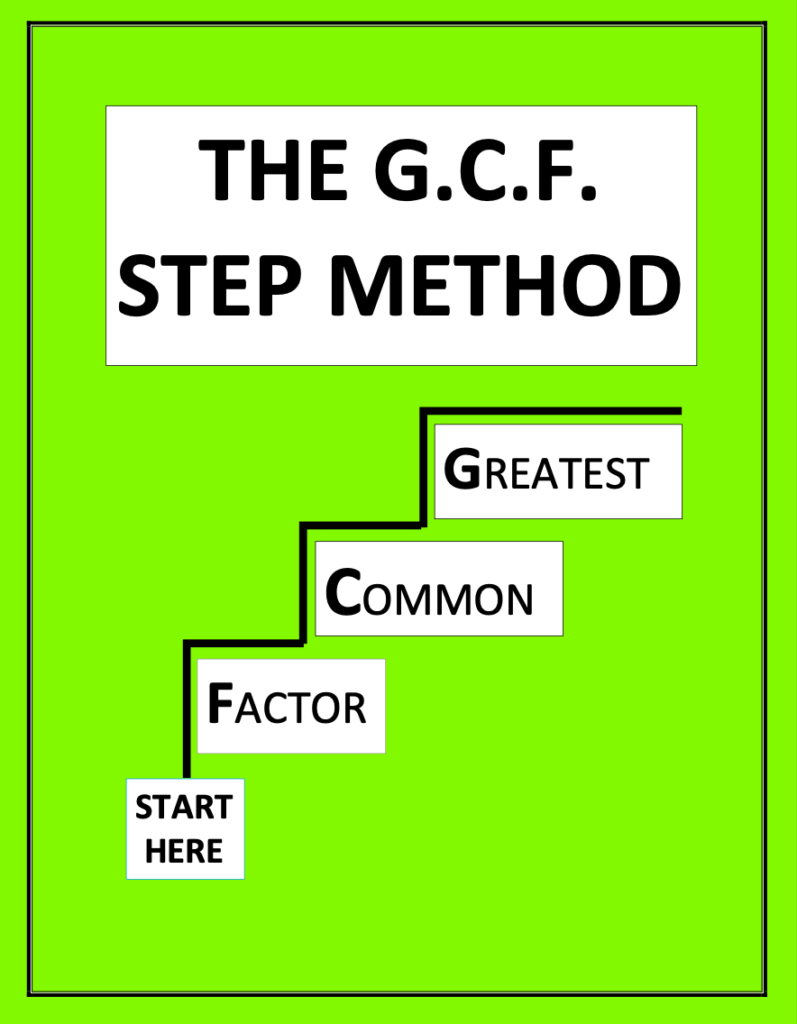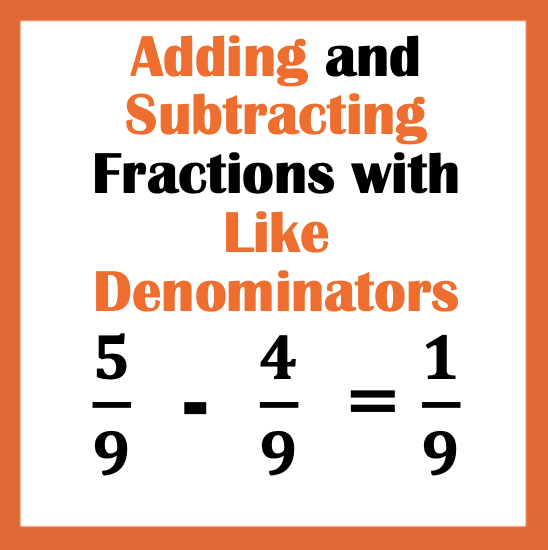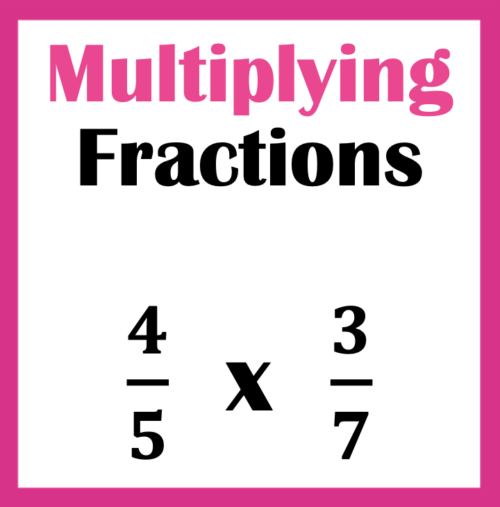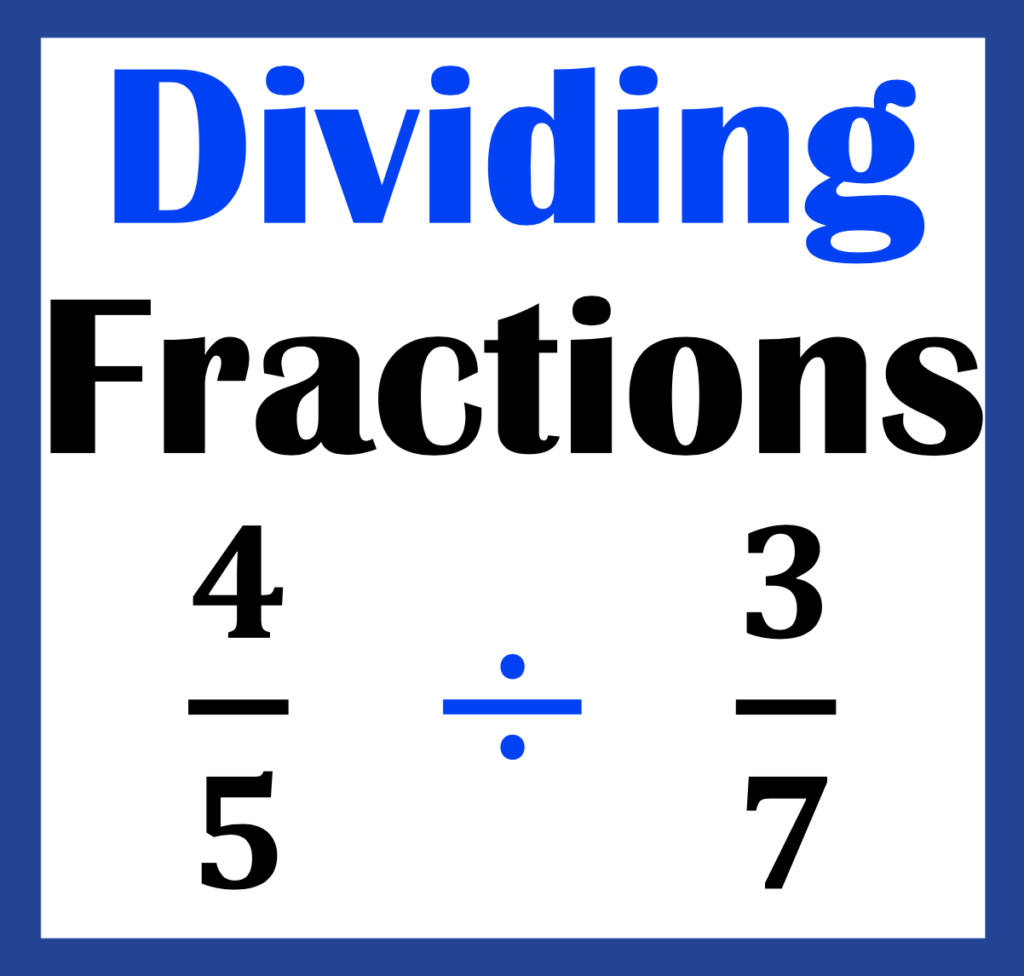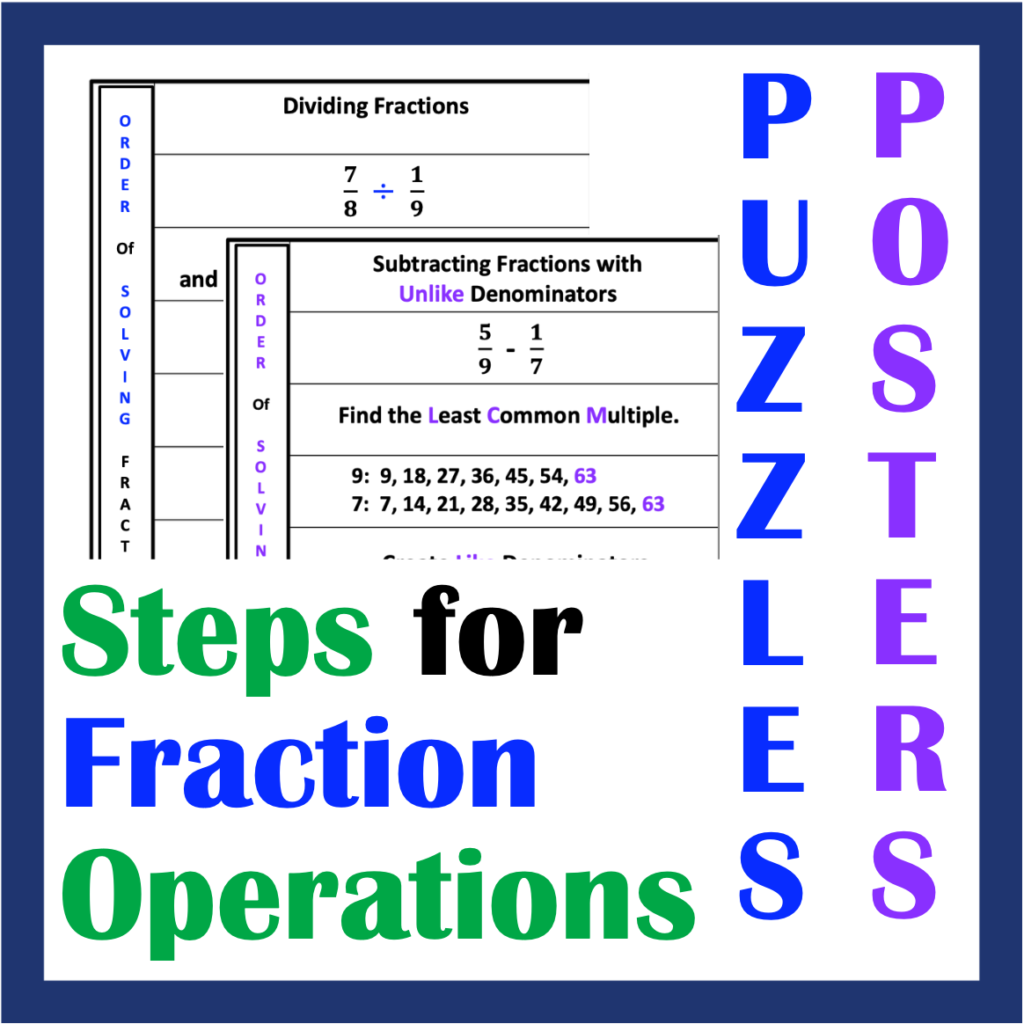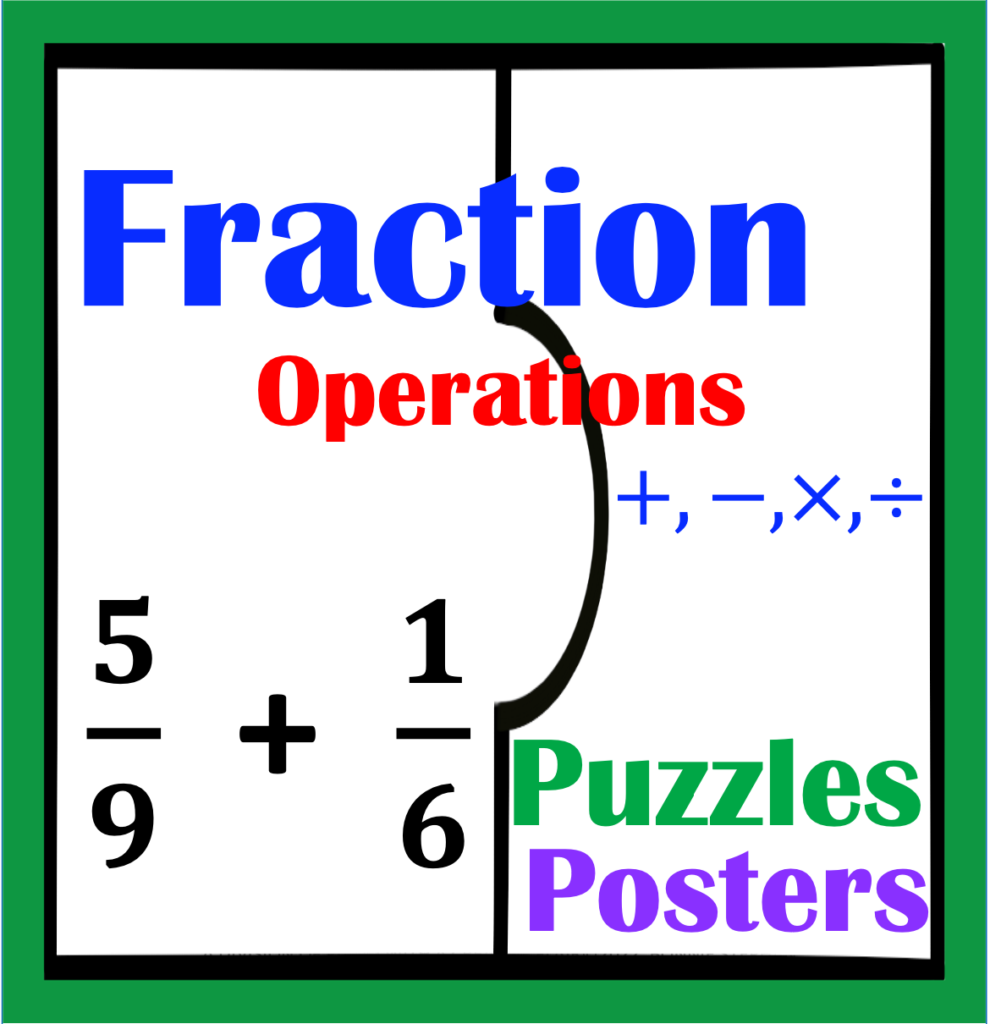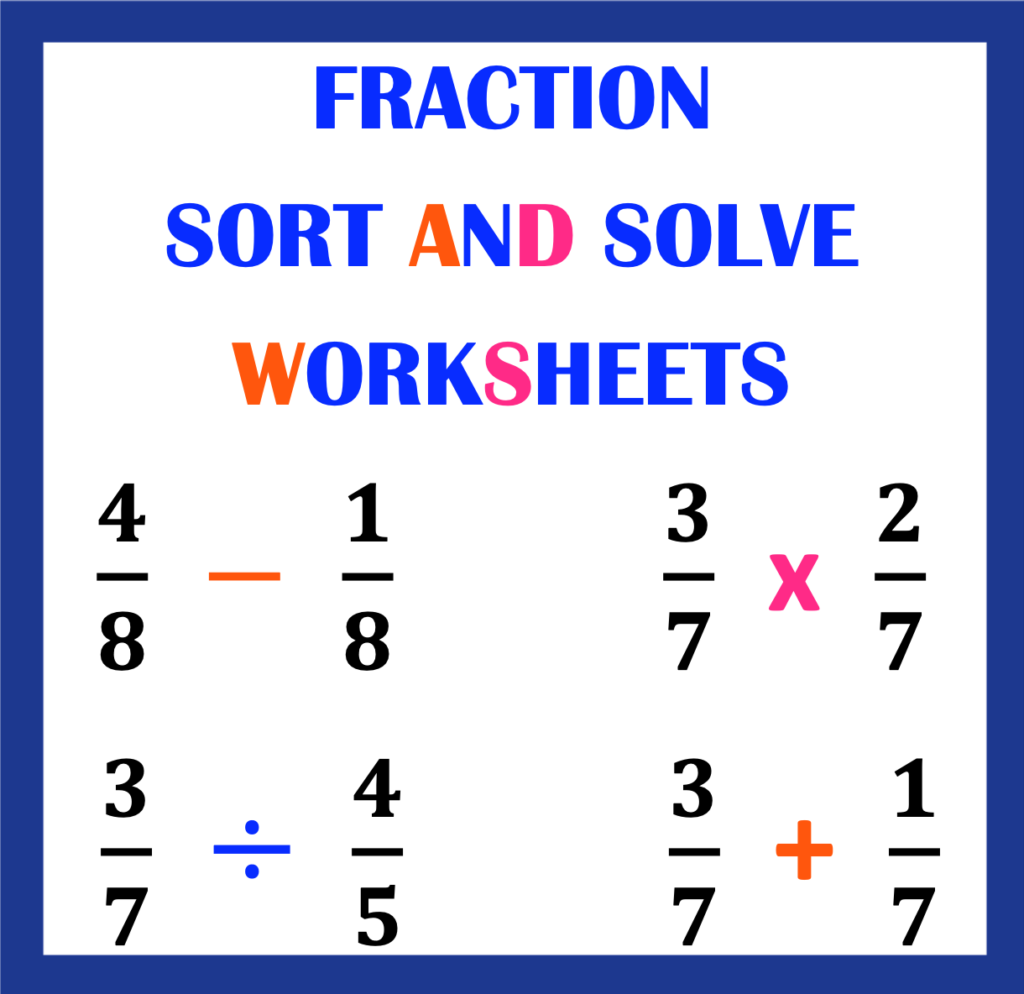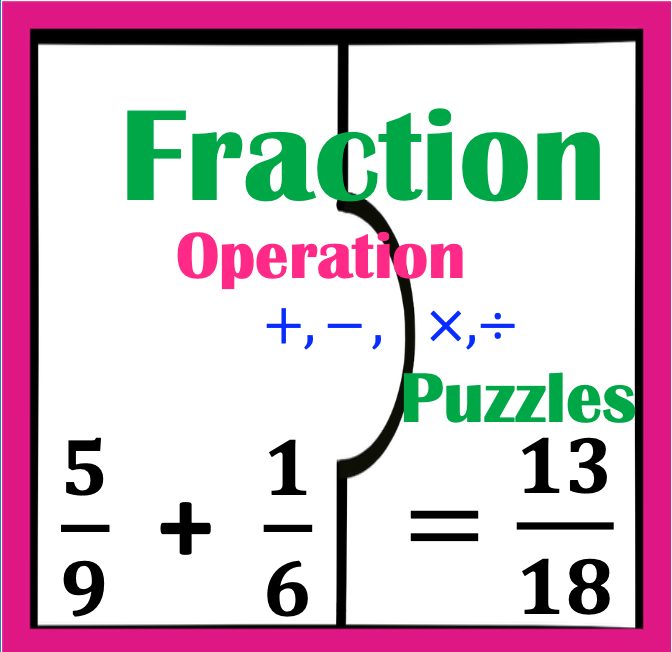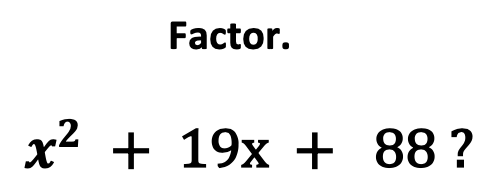
Do you teach Middle School Math or Algebra 1? If so, you have discovered there are students who do not know all their multiplication facts. How often have you observed students testing every possible one-digit number to determine the factors for a number such as 88 when attempting to factor a trinomial? True. Some students will recognize factors right away. However, others will divide this number by two till it can no longer be divided. These are the students who are not done with the test before class is over. There is also another group of students. Bless their hearts. They will plug in every imaginable number into the calculator, desiring to be as thorough as possible, clicking away as if their life depended on it, searching for any possible number they haven’t already found. I’ve been there. Fortunately, I realized there is a better way to help older students tackle multiplication. Keep reading as you discover how to empower student success with multiplication in high school math to find factors of polynomials in Algebra.find factors of polynomials
Contents:
- Introduction
1. Number Sense and Number Fluency
2. When to Teach Factors of Numbers
3. Number Patterns
Warm Up
Levels 1 – 4
4. Number Patterns Related to Money Values
5. Divisibility Rules: When Numbers Do Not Break in Half
6. Interesting Number Patterns for Factors of 28, 42, 49, 56, 84, and 98
Conclusion
1. Number Sense and Number Fluency
Many students are using their phone, calculator, and the internet to complete homework. As teachers, we have observed this as students request the use of a calculator for determining multiplication facts like 4 x 6 and others. Though there are times when a calculator may be appropriate for use, it does not build number sense and number fluency.
When students have integrated number sense and fluency, it allows students to finish homework and tests more efficiently. It is also significant for timed tests such as the A.C.T. How many times have you heard a student say,

“If I only had more time on the math section of the A.C.T. I would have more time to figure out the more challenging problems and complete all the questions.”
One way to help students is by building number sense and fluency through the practice of listing factors of numbers. The goal of listing factors is not just for reducing fractions, simplifying factors and polynomials. It is a practice that increases student number sense and fluency to be more efficient with other math calculations.
2. When to Teach Factors of Numbers
I introduce students to factors on the first day of class as I know it will truly pay off in the end. On the other hand, if you are already in the middle of the school year, there is no better time than the present. Another excellent time to review factors of numbers is a month before covering topics such as reducing fractions, simplifying radicals, and factoring polynomials.
3. Number Patterns
Let’s list factors of numbers to increase number sense and fluency to empower success with multiplication and other math in high school.
First, explore general examples of number patterns. Next, the use of these patterns will be applied to specific numbers.
General Examples
Below are illustrated examples of general patterns.
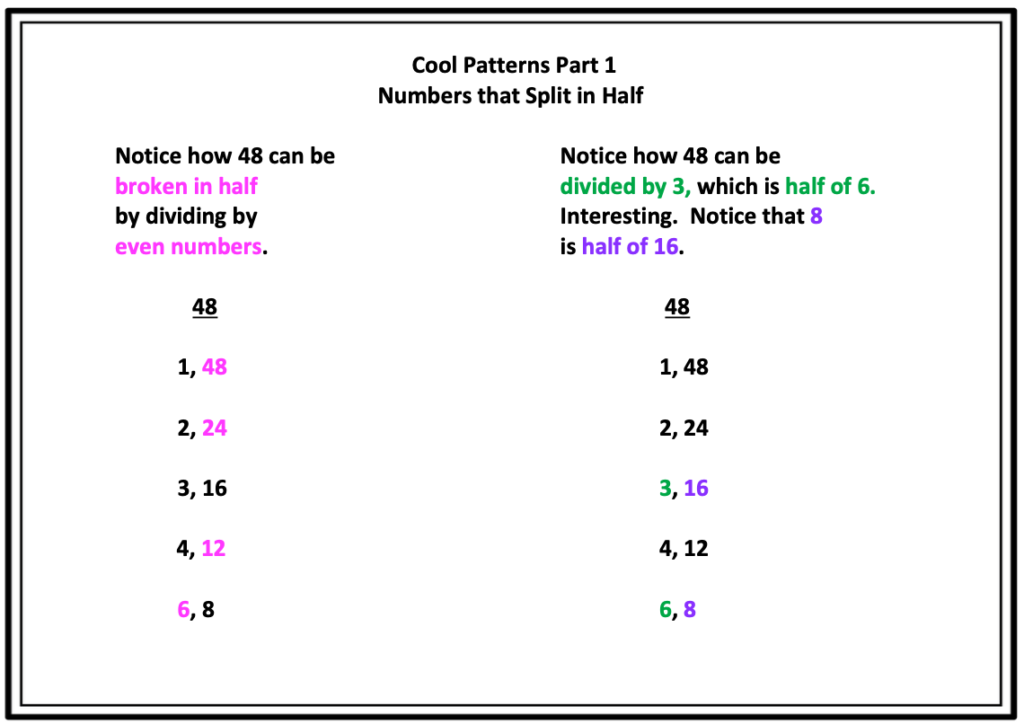
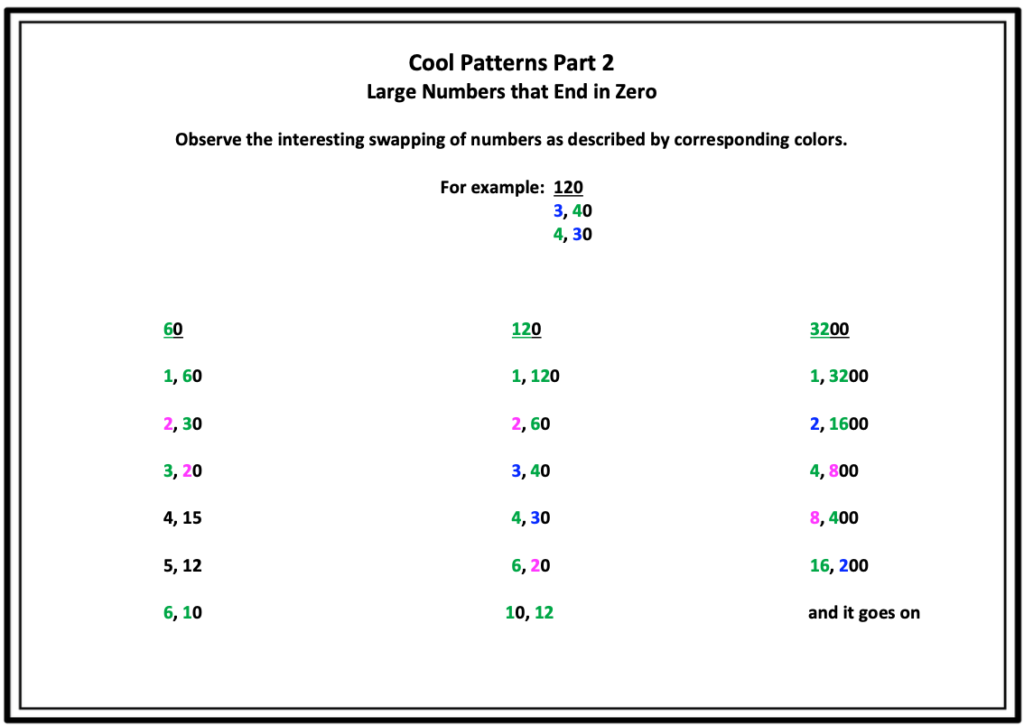
These patterns may be observed as numbers are factored.
Warm-Up
Begin by casually discussing the concepts of doubling and breaking numbers in half. Describe the activity as a fun exploration of numbers.
Next, provide a number for students to double at least five times. See the example below.
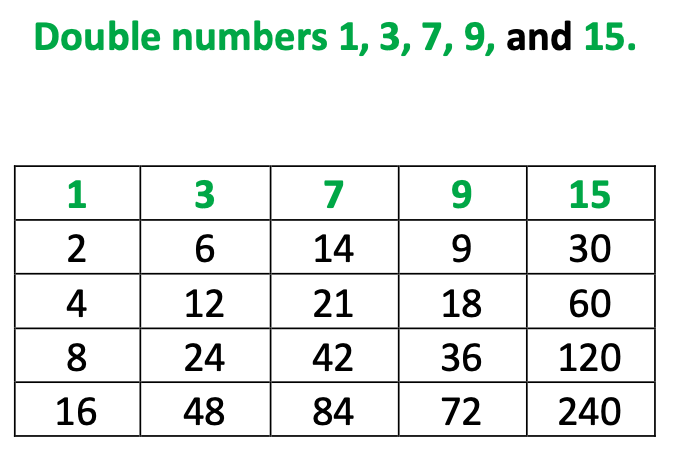
Next, practice breaking even numbers in half.

After students complete this task, remind students that a number is made up of factors. For example, the factors of the number eight include the numbers 1, 2, 4, and 8.
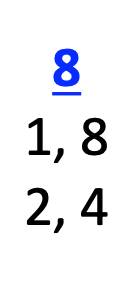
Level 1: List Factors of Numbers with Two Factor Pairs.
Now students may practice doubling and breaking numbers in half.

Level 2: List Factors of Numbers with Three Pairs
Next, list factors for numbers that have three factor pairs.
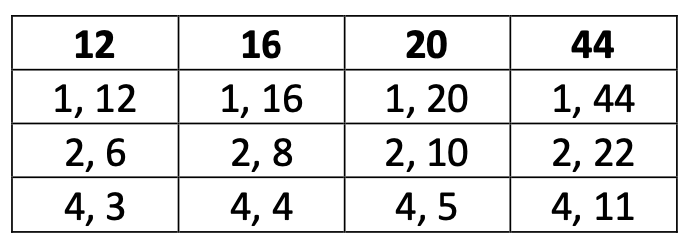
Level 3: List Factors of Numbers with Four Factor Pairs
Continue the practice by listing factors for numbers with four ordered pairs.
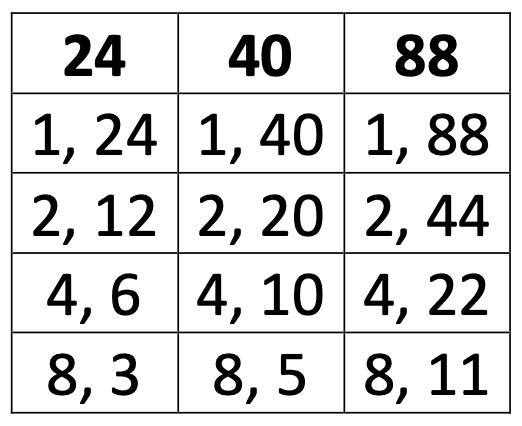
Level 4: List Factors of Numbers with Five Factor Pairs
By this time, students are likely feeling very confident with factoring numbers that easily break in half. This will build student confidence and provide clues for solving more challenging numbers. This method also provides a strategy to increase recognizing facts of multiplication in high school.
Before moving on, give students the opportunity to think of other numbers that may also follow this type of pattern.
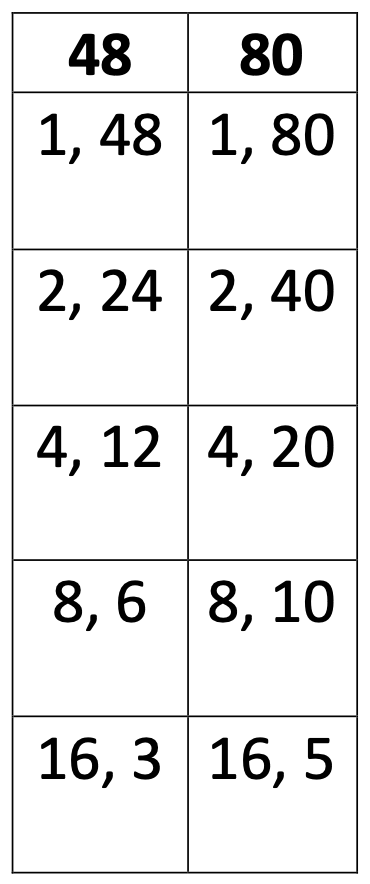
4. Number Patterns Related to Money Values
Another useful pattern to use when factoring numbers such as 100, 125, 150 and 175 is to think of these numbers as one would about money.
For example, The number, 100 may be thought of as $ 1.00 = 100 cents = 100 pennies = 20 nickels = 10 dimes = 4 quarters at twenty-five cents each.
Even the number 175 can be thought of a $ 1.75, or the value of 7 quarters.
While students list factors for these and other similar numbers, students may benefit from using coins to illustrate these values.
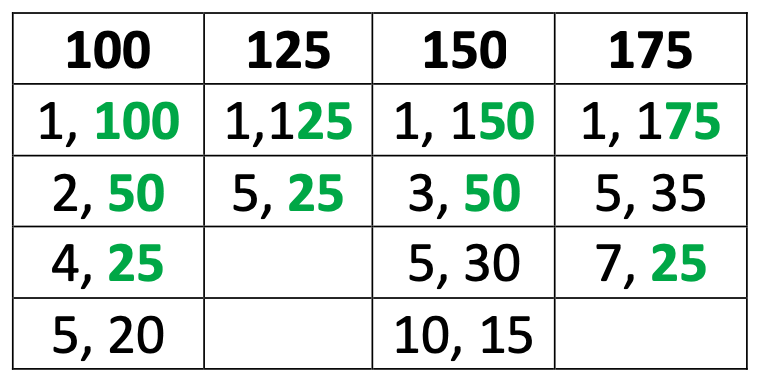
5. Divisibility Rules: When Numbers Do Not Break in Half
Illustrated below is a chart that includes the basic divisibility rules for factoring most numbers 0 – 100.

Divisibility rules are of significant help when listing factors of numbers. As students fill in each missing factor, they often find that these numbers provide clues to other missing factors.
Divisibility rules may be used to determine the missing factors below.
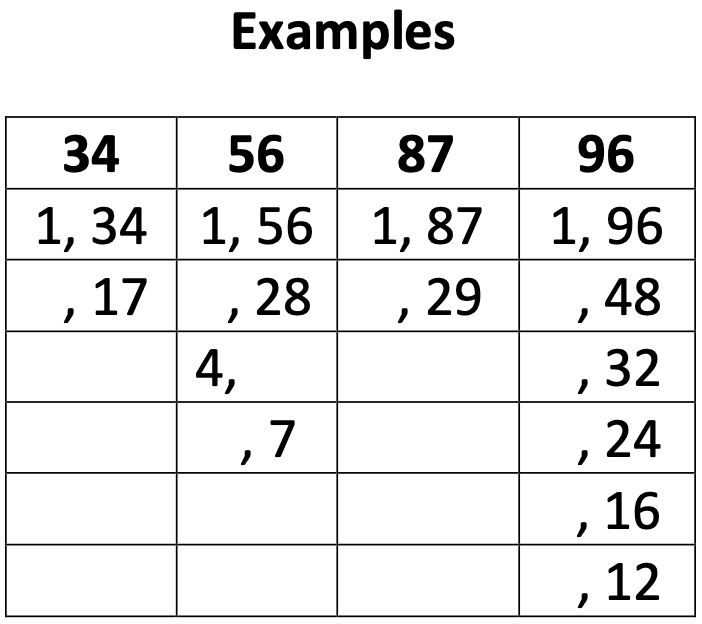
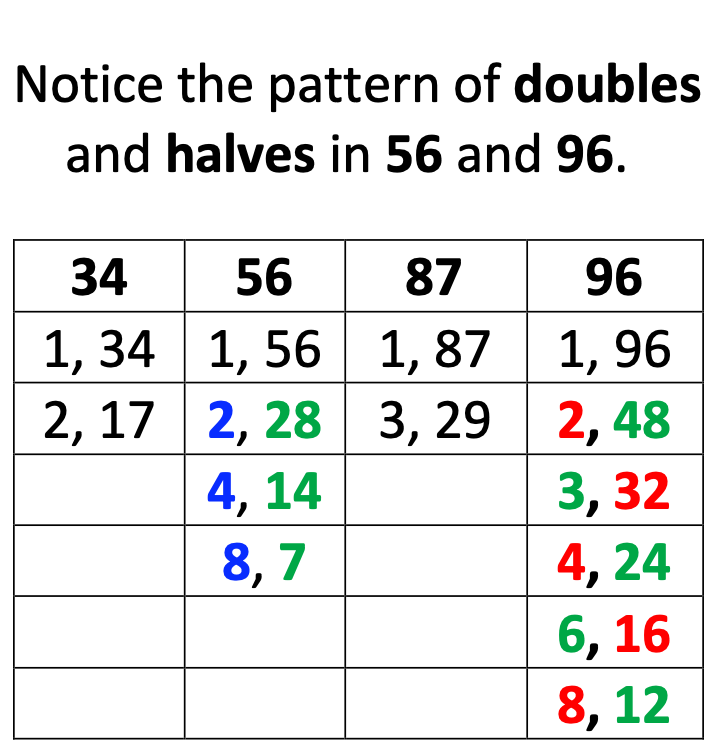
6. Interesting Number Patterns for Factors of 28, 42, 49, 56, 84, and 98
The multiples of seven and the factors of those numbers tend to stump students the most, which is why I left seven for last. The good news: All of the strategies learned so far will also be noticed when listing factors for 28, 42, 49, 56, 84, and 98.
Below, observe the rather beautiful patterns related to the number, 7.
If you write your own quizzes, these are great numbers to include for practice and review of factors. These numbers are also ideal to include with problems such as factoring polynomials and simplifying radicals.
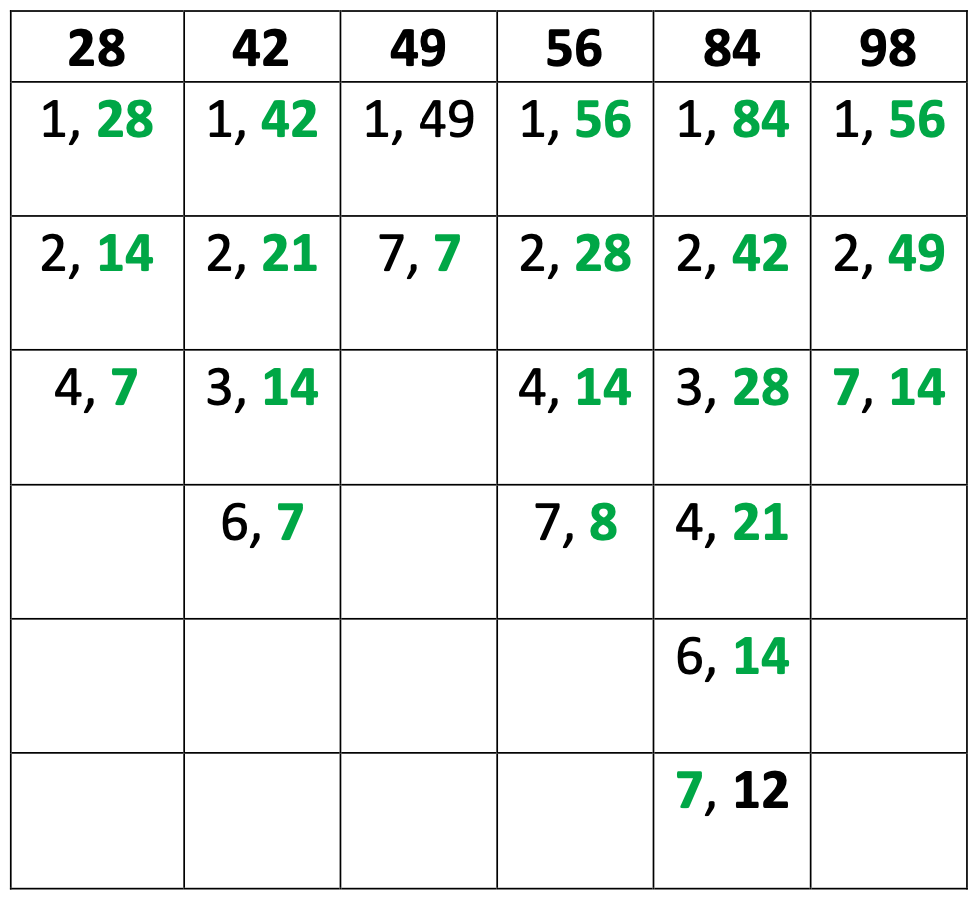
Conclusion
It is never too late to help students develop number sense and number fluency. Listing factors of numbers is such a strategy for developing this.
The results of this practice is priceless.
Students will be amazed at their ability to complete calculations at a much faster rate and accuracy on other math tasks.
You will be excited when they no longer list the number 51 as prime and that 7 x 8 = 56!
Yes! List factors of numbers to increase number sense and fluency to empower success with multiplication and other math in high school.
Other Similar Topics:
9 Important Middle School Math Concepts
https://ledtodiscover.com/middle/9-important-middle-school-concepts/https://ledtodiscover.com/middle/9-important-middle-school-concepts/
Below is a product that provides instruction and practice for factoring numbers.
https://www.teacherspayteachers.com/Store/Bonnie-Stephan
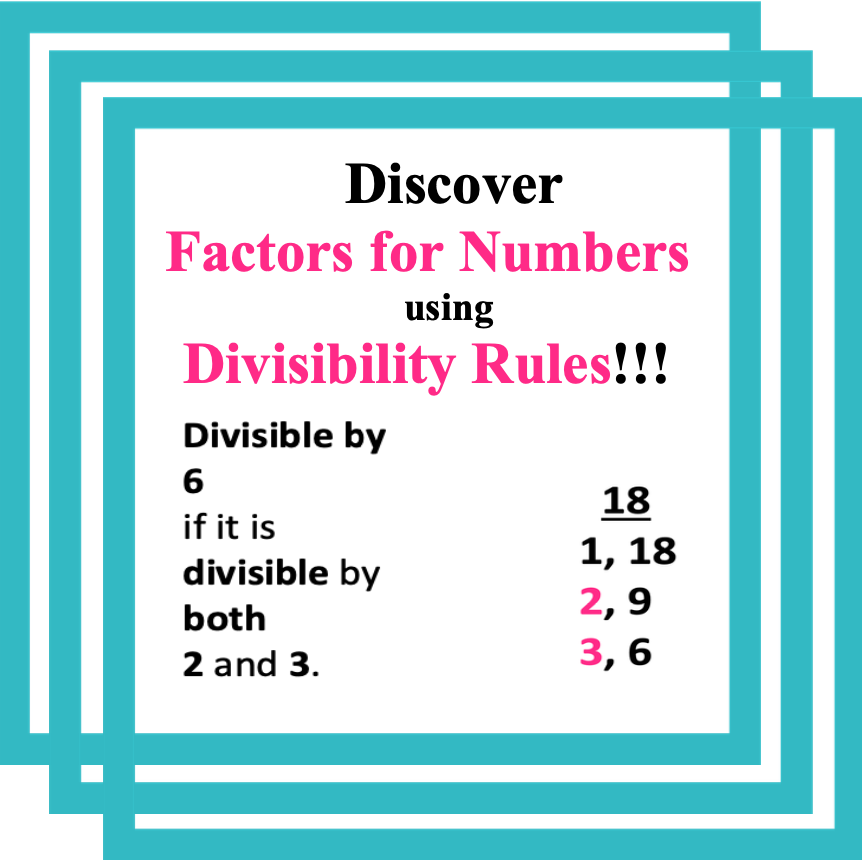


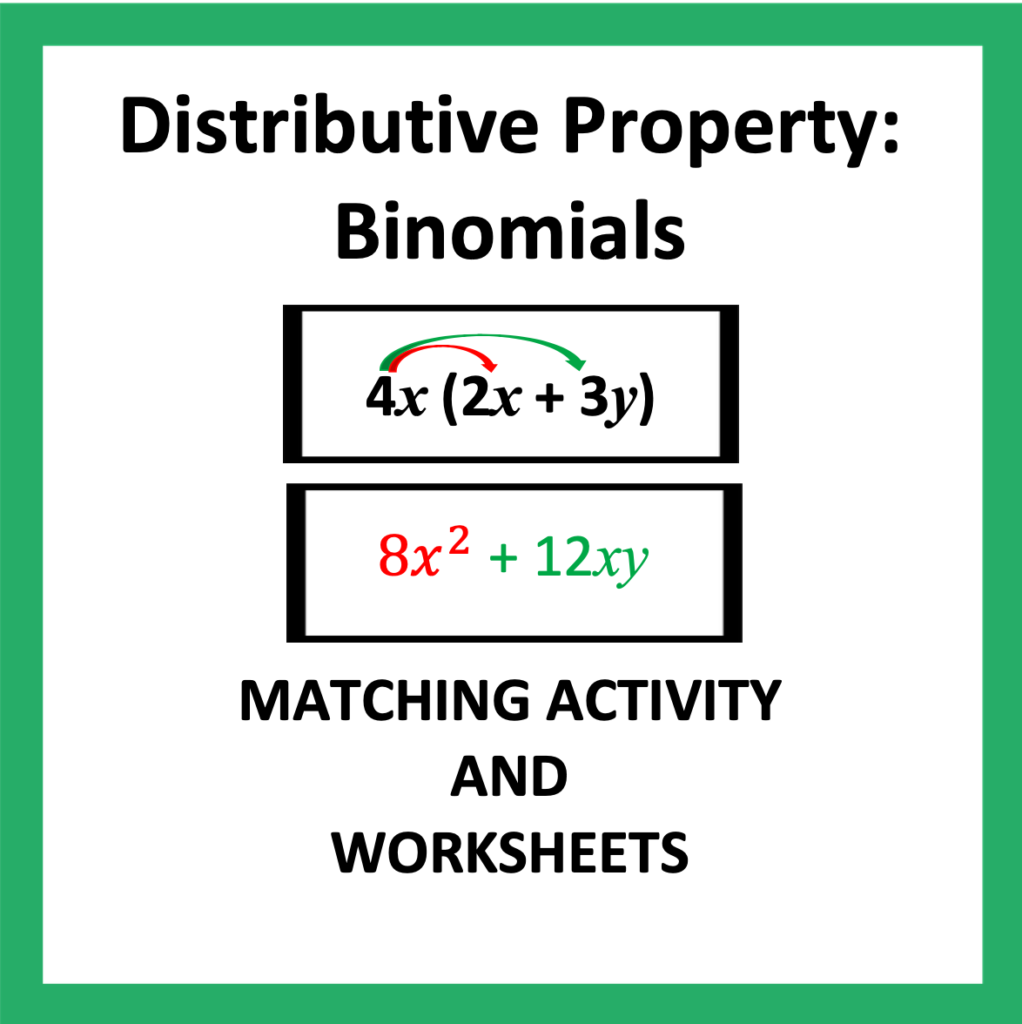


More products like these are coming.
